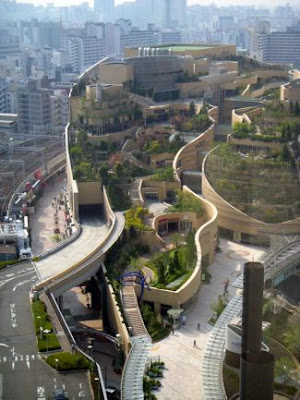Landscape International
August 3, 2010
Landscape Architecture and Design
for International Projects
From master planned communities to sprawling public parks, landscape architecture and design has become an intricate part of the world we come in contact with on a daily basis.
Today, the beauty of landscape architecture and design is found in the waterfall displays decorating courtyards of major commercial buildings, as well as the interior and exterior garden design of prominent landmarks in the United States, Europe, China, Russia, Australia, Dubai, Abu Dhabi, Saudi Arabia, India and Brazil to name a few.
Centuries of great design have decorated the pages of landscape architecture history, ranging from far-reaching ancient Roman town layouts, renaissance gardens during the 17th century, the formal fountains of Newport, Rhode Island mansions, and the Asian gardens that appeared in the U.S. after World War II. With years and years of ever-evolving trends and milestones, the art of landscape architecture now encompasses many different realms of design, planning, and execution.
Centuries of great design have decorated the pages of landscape architecture history, ranging from far-reaching ancient Roman town layouts, renaissance gardens during the 17th century, the formal fountains of Newport, Rhode Island mansions, and the Asian gardens that appeared in the U.S. after World War II. With years and years of ever-evolving trends and milestones, the art of landscape architecture now encompasses many different realms of design, planning, and execution.
The Ins and Outs of Landscape Design and Architecture
Landscape design not only captures the essence of enclosed spaces, but also includes open public spaces, such as town squares, and recreation havens like Golden Gate Park and Central Park.
With the help of a landscape architect, the blueprints and development of a landscape architecture project centers on expanding the number of ways that people are able to interact with their surroundings.
The process not only focuses on design, function, and visual appeal of a space, but also incorporates outside factors that can significantly affect the outcome of a project.
For example, protecting the environment from damaging human use is an important aspect to consider, which means that a landscape architect must fully understand the cultural and environmental factors that can influence landscape design plans. In this day and age, environmental planning has become an increasingly important field in the world of landscaping, joining a wide-range of disciplines that include:
- • Landscape and urban design • Community and regional planning • Agricultural and rural land-use planning • Parks and recreation • Historic site and natural area preservation • Landscape restoration and management • Research and academic programs • Energy and water conservation
Within the field of landscape architecture and design, one may pursue a variety of interests and specialties that utilizes distinct areas of knowledge.
Landscape designers are in charge of constructing the plans for planting and green space.
Landscape scientists are experts at solving practical obstacles that involve soil science, botany, or hydrology.
Landscape planners look into the policies surrounding location, ecological concerns, and recreational possibilities regarding land in urban, rural, and coastal areas.
A historic garden conservation project may require a garden designer for direction. In the end, a landscape manager often offers their input for the long-term care and maintenance of a project.
Landscape architecture and design is a multi-faceted field that uses geography, mathematics, engineering, technology, science, and art to create splashes of beauty and impressive functional outdoor spaces. Along the way, landscape architects learn how to juggle the aesthetic value of design, history, ecology, and even politics to achieve plans that bring flowers, grass, rocks, trees, shrubs, benches, fountains, reflecting pools, and outdoor artwork to life.






